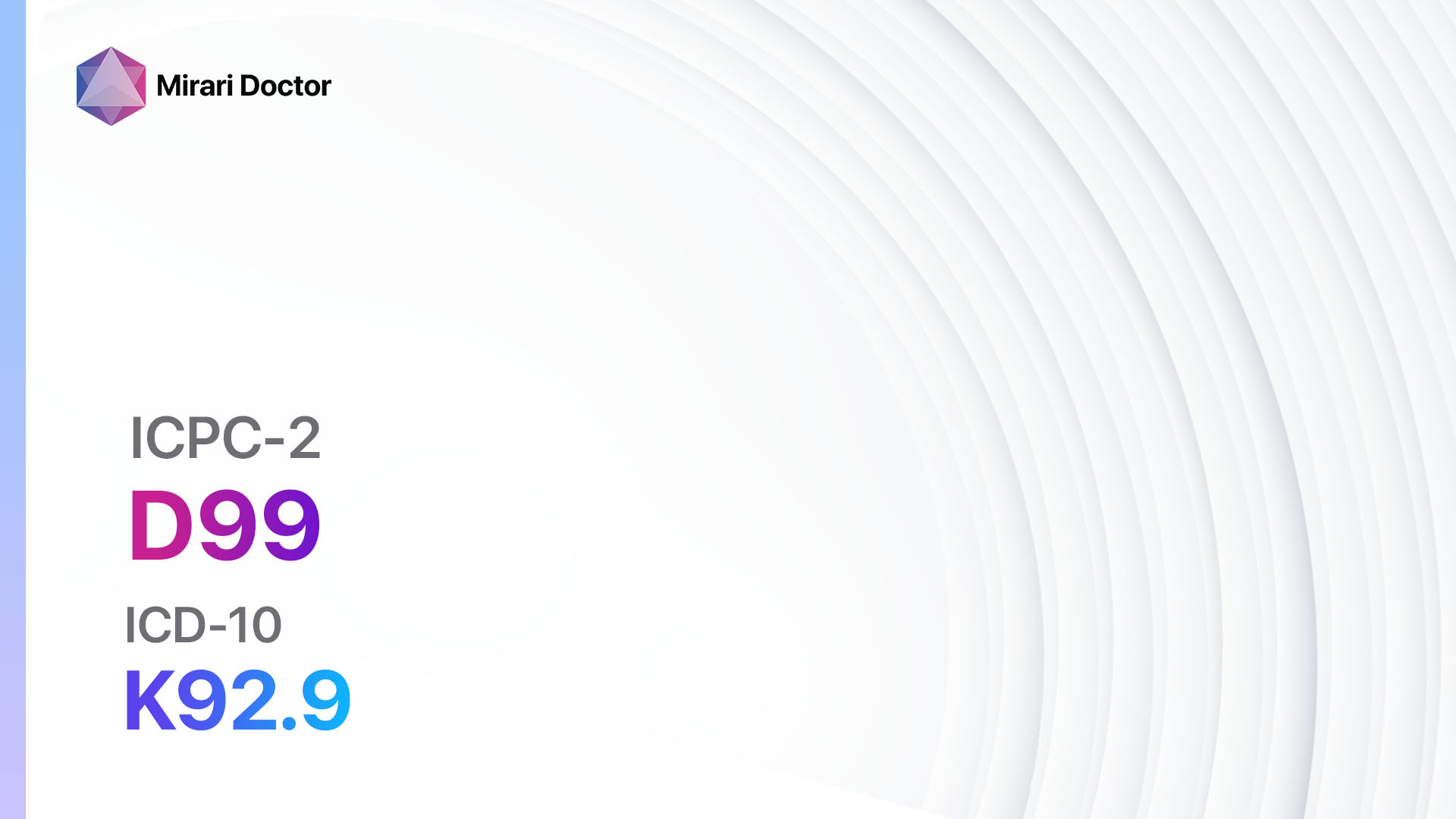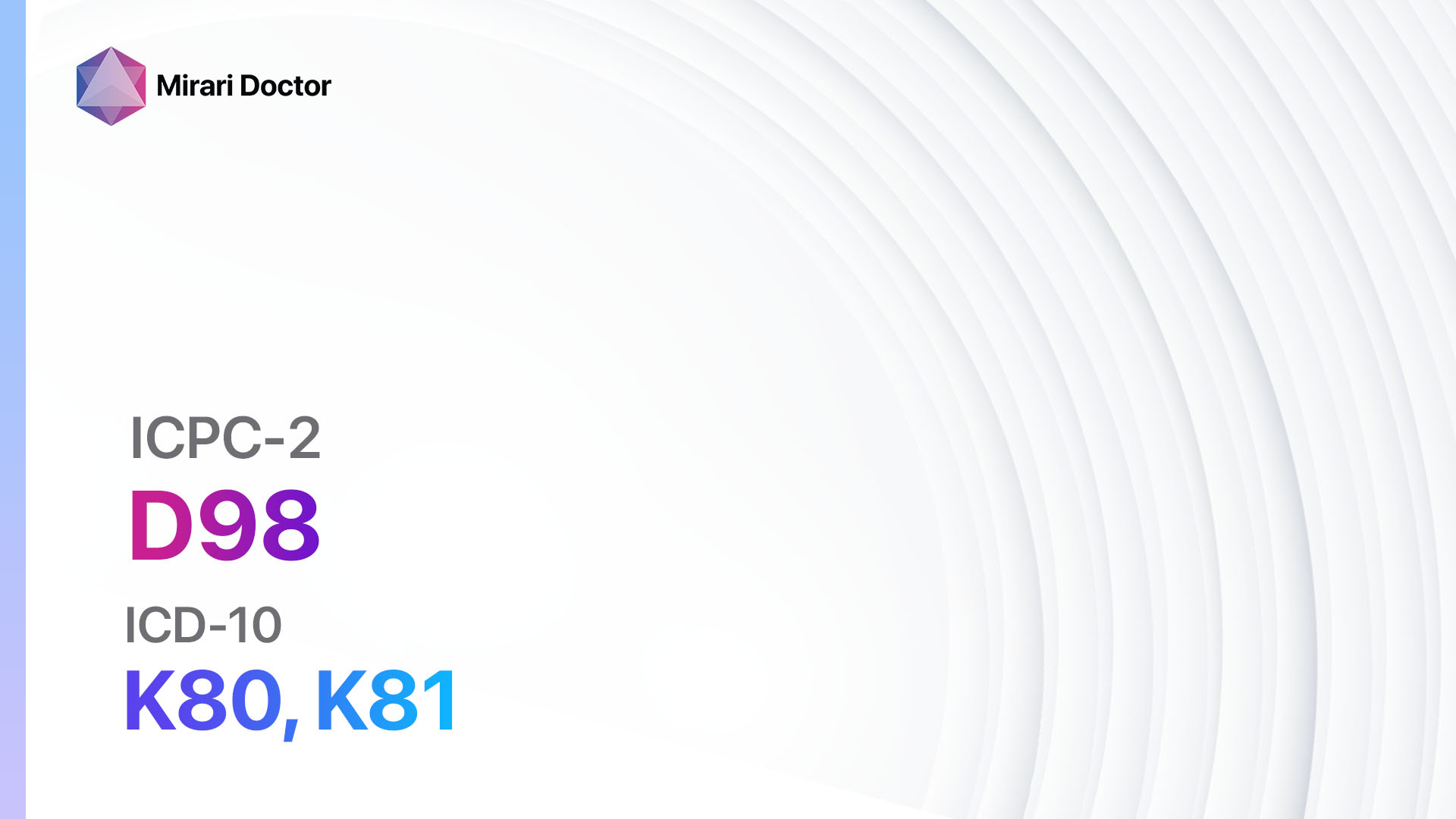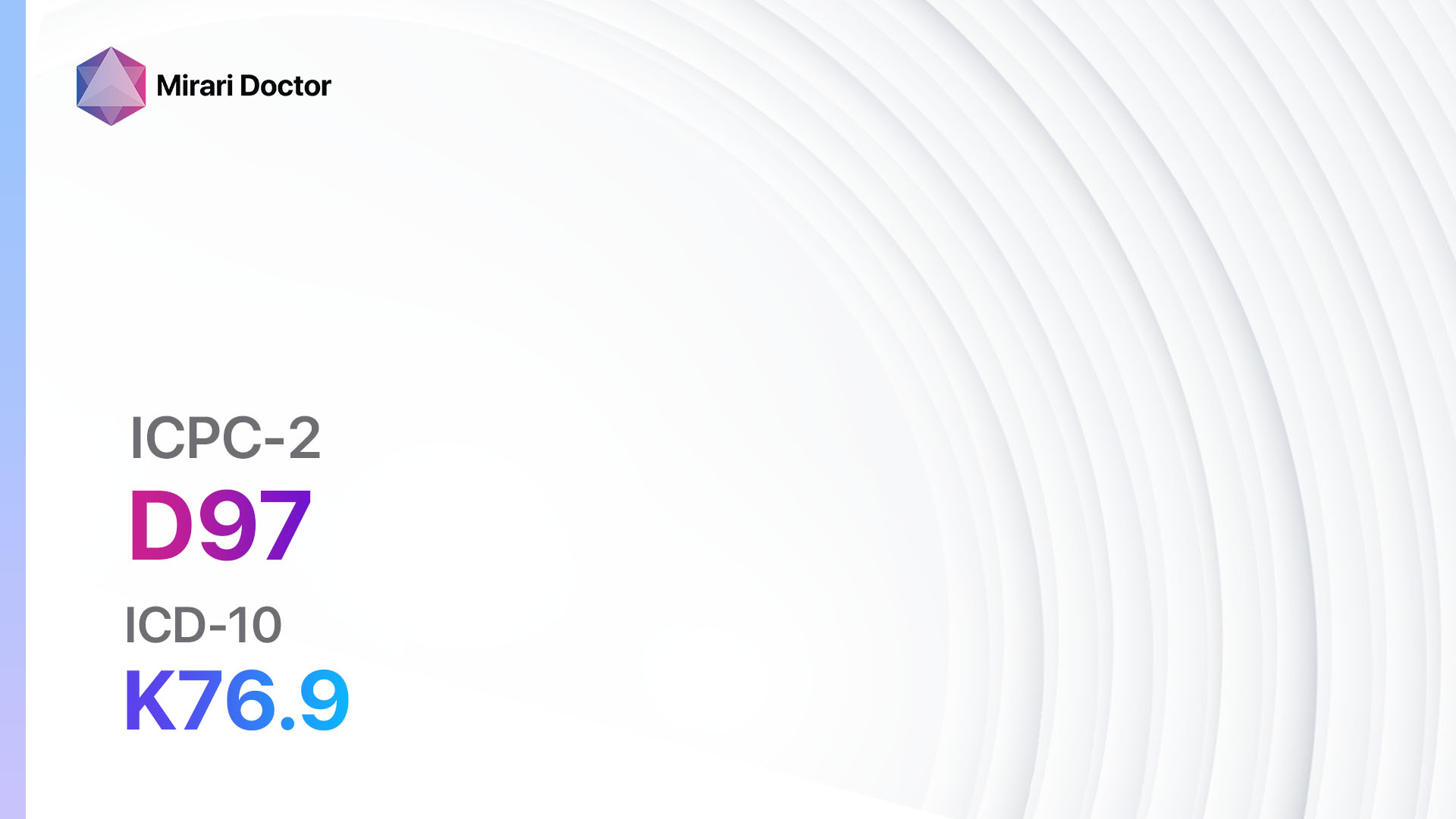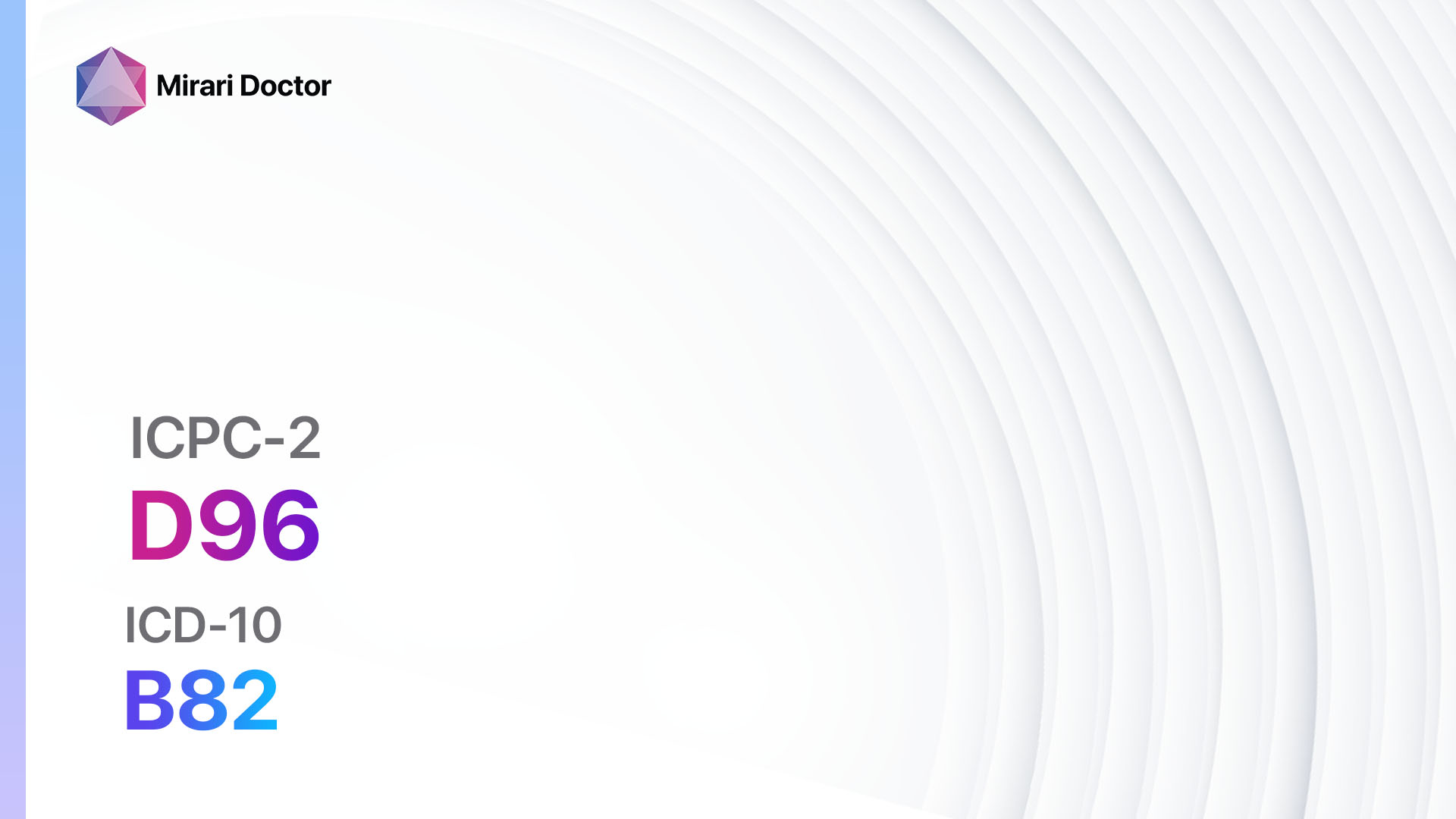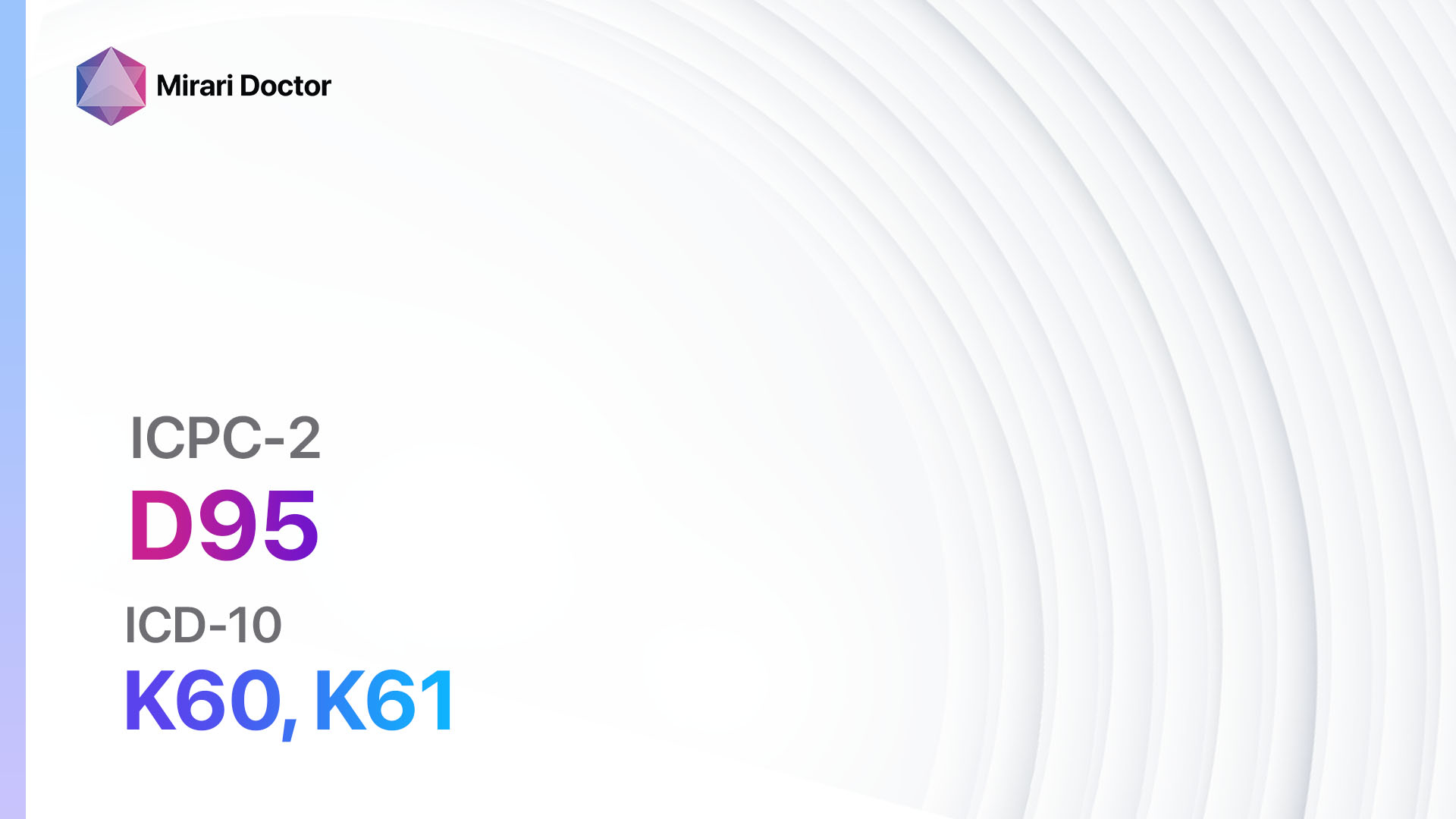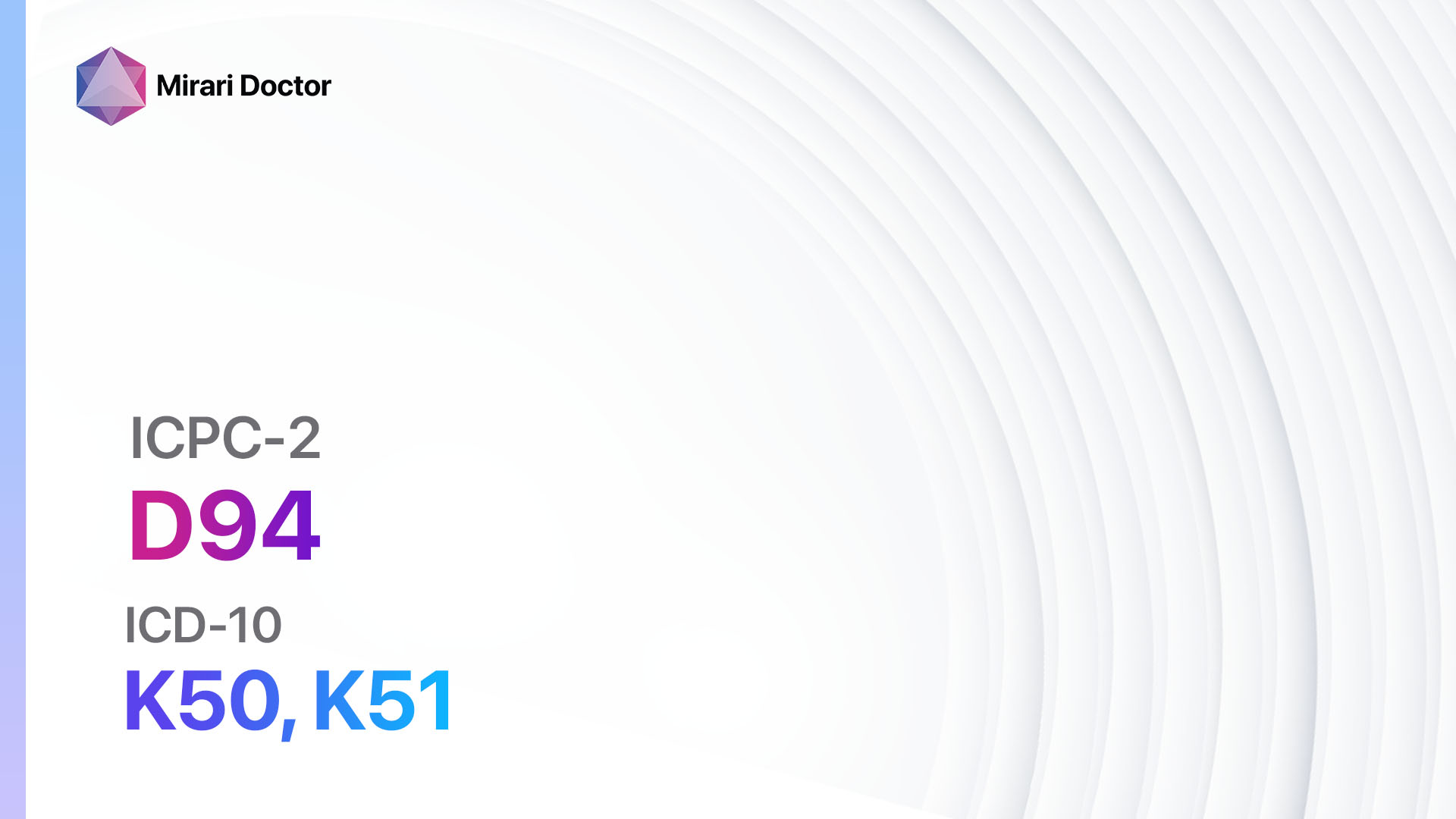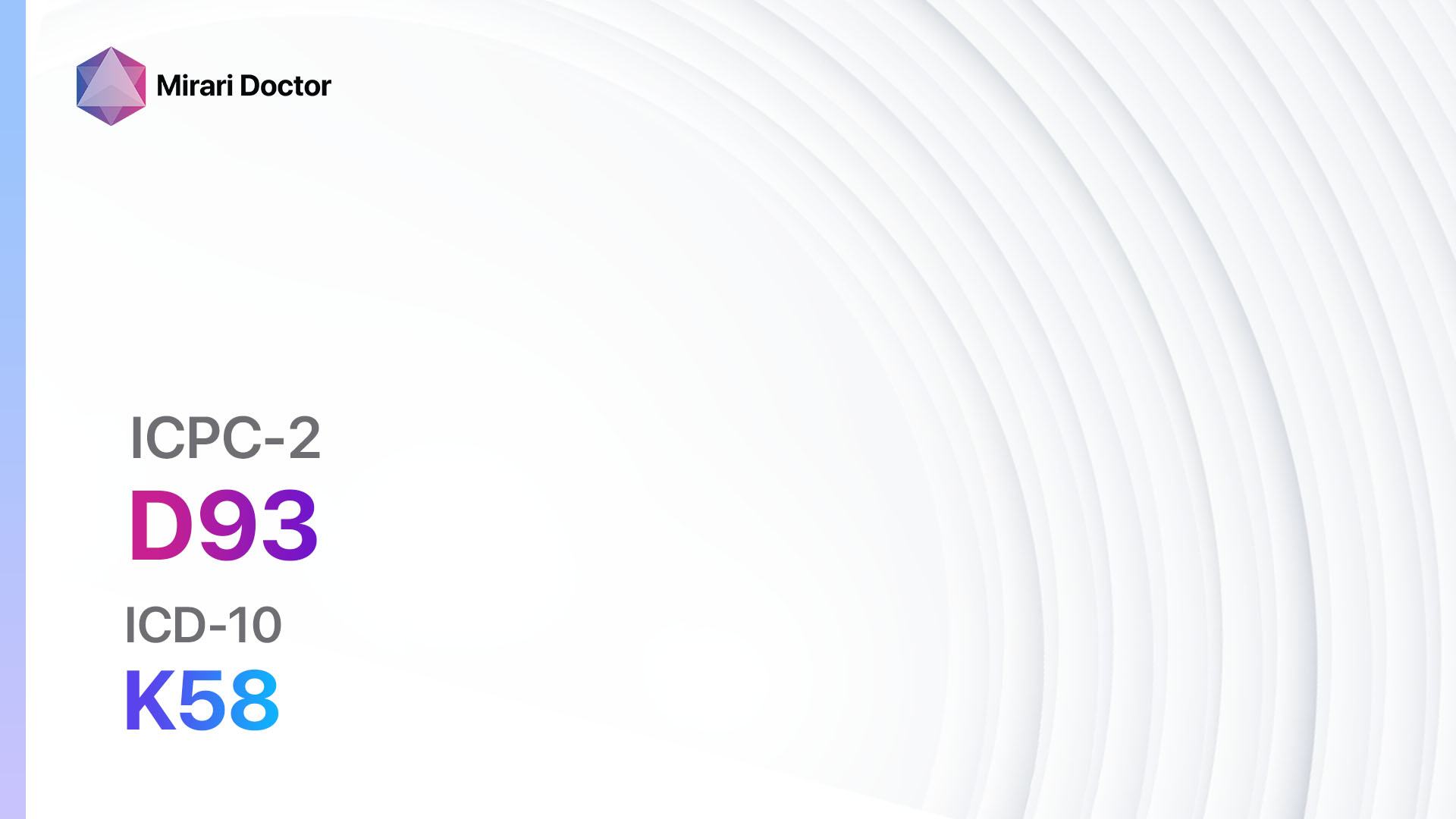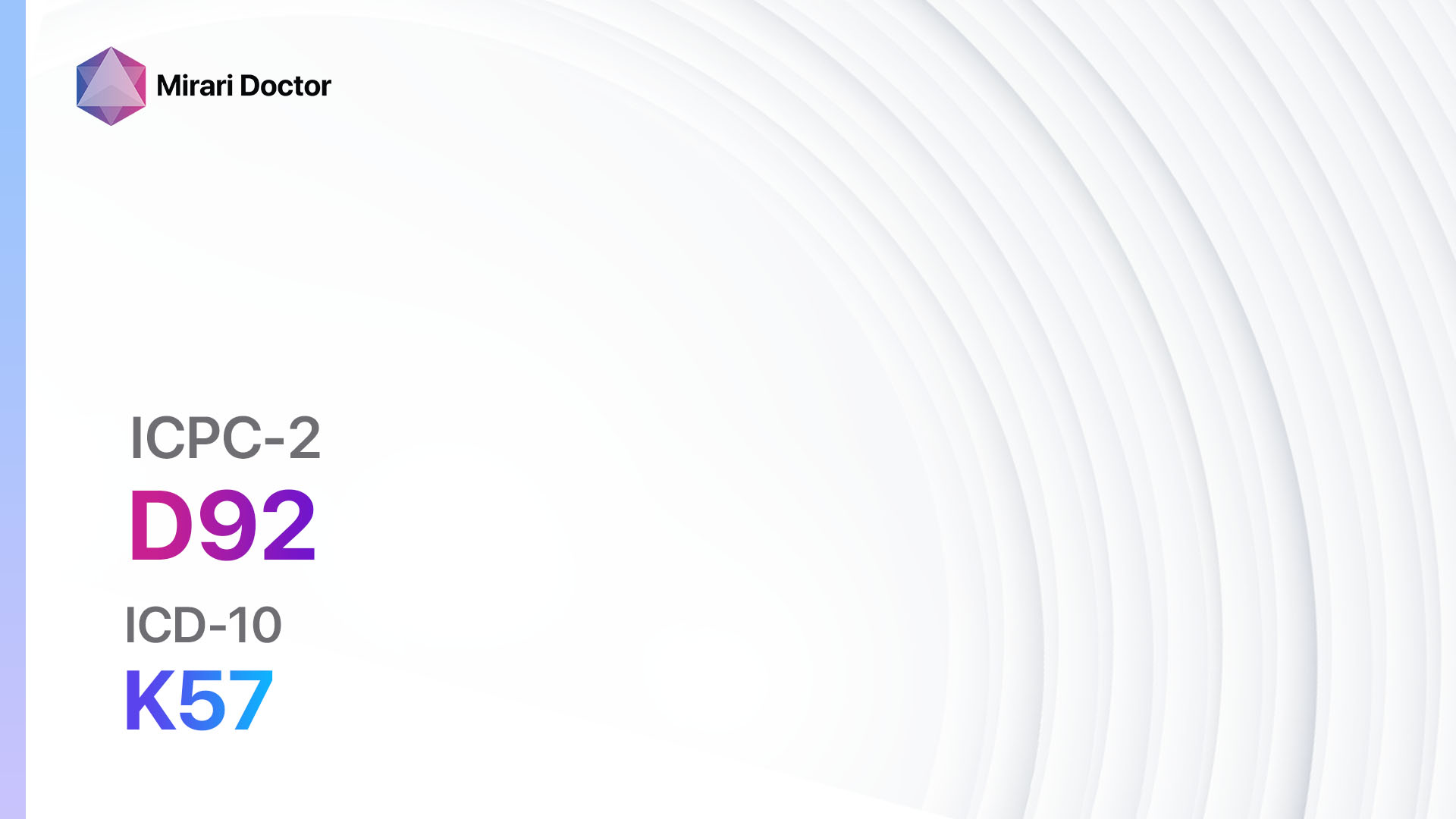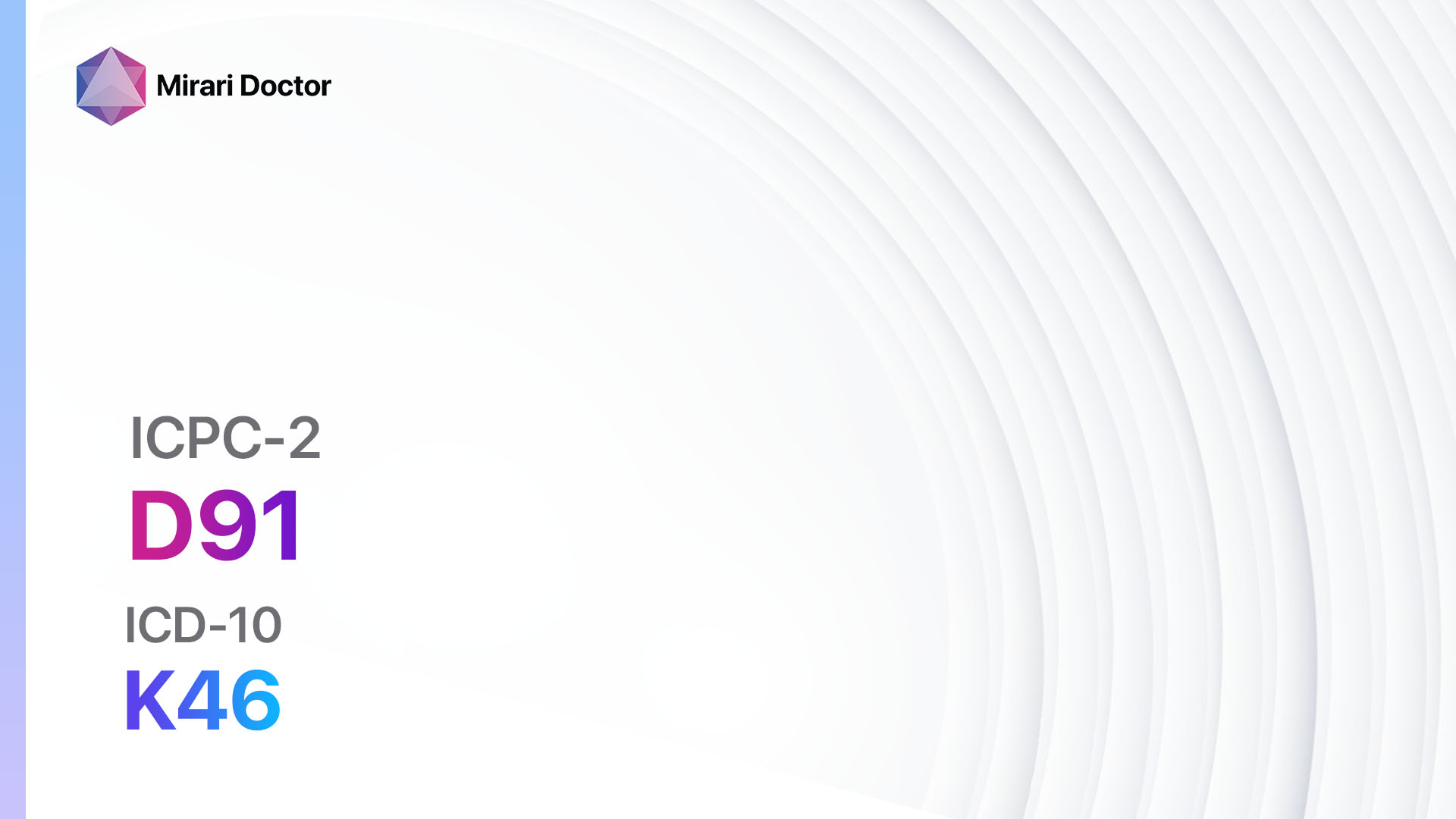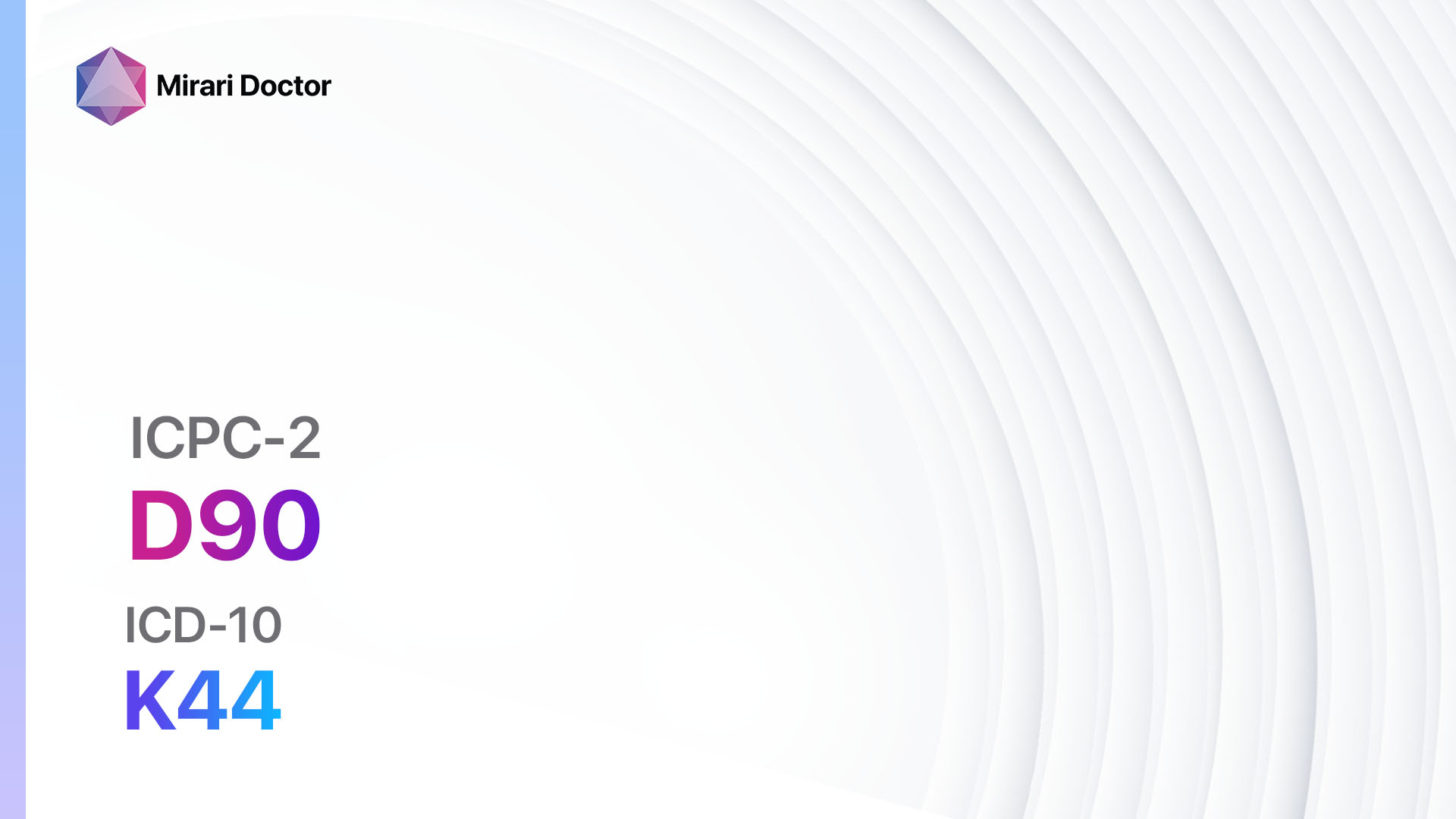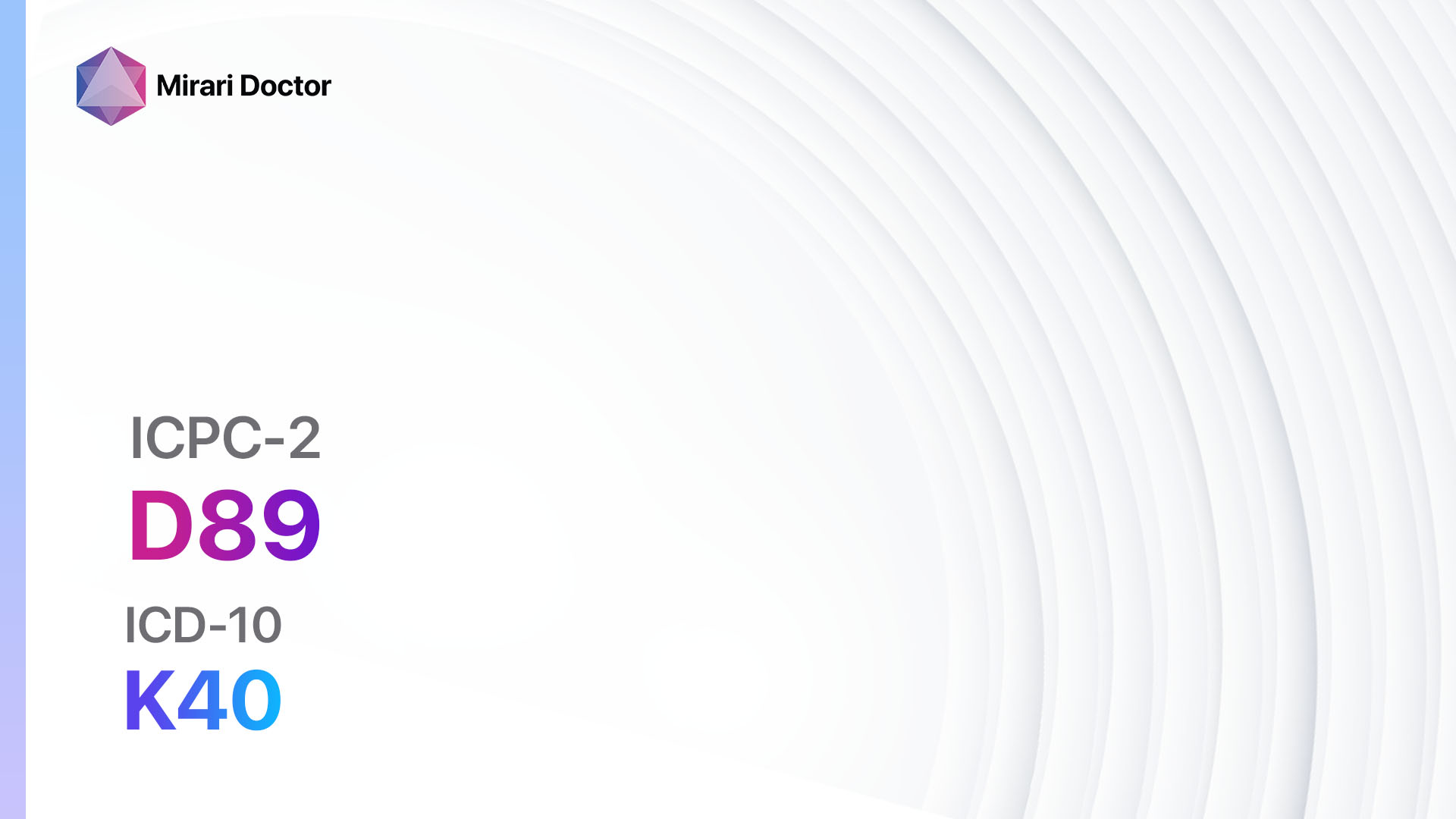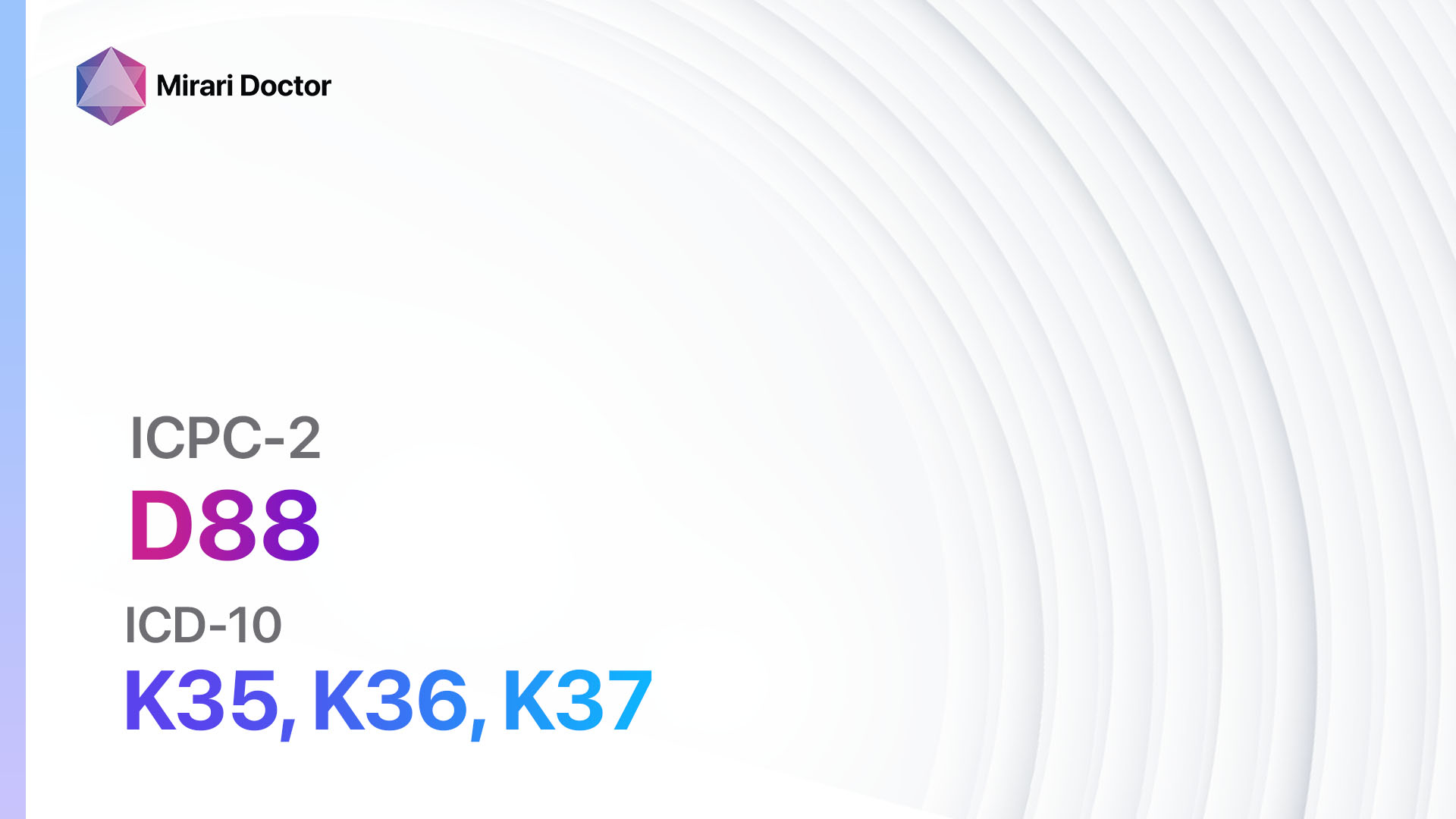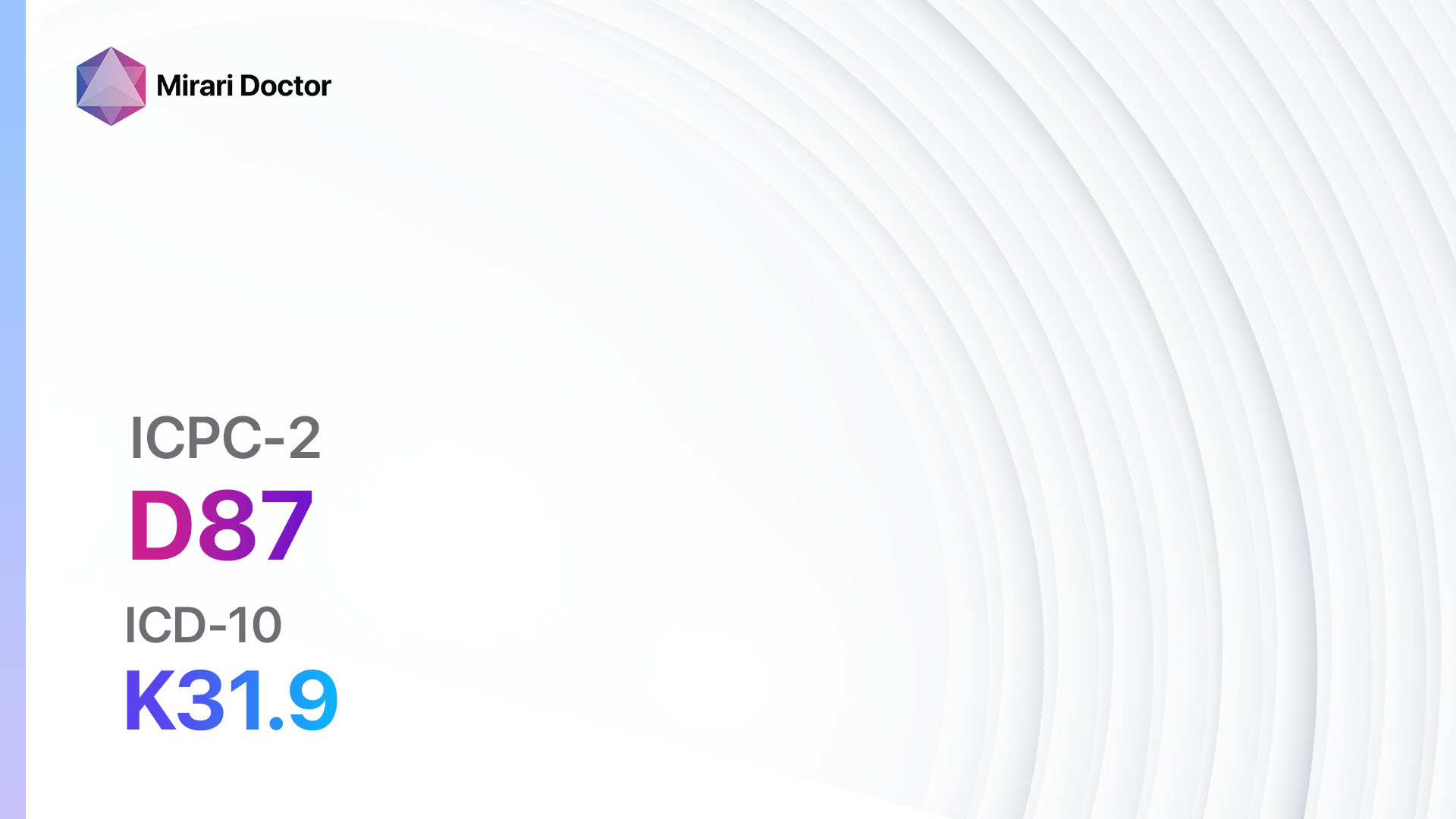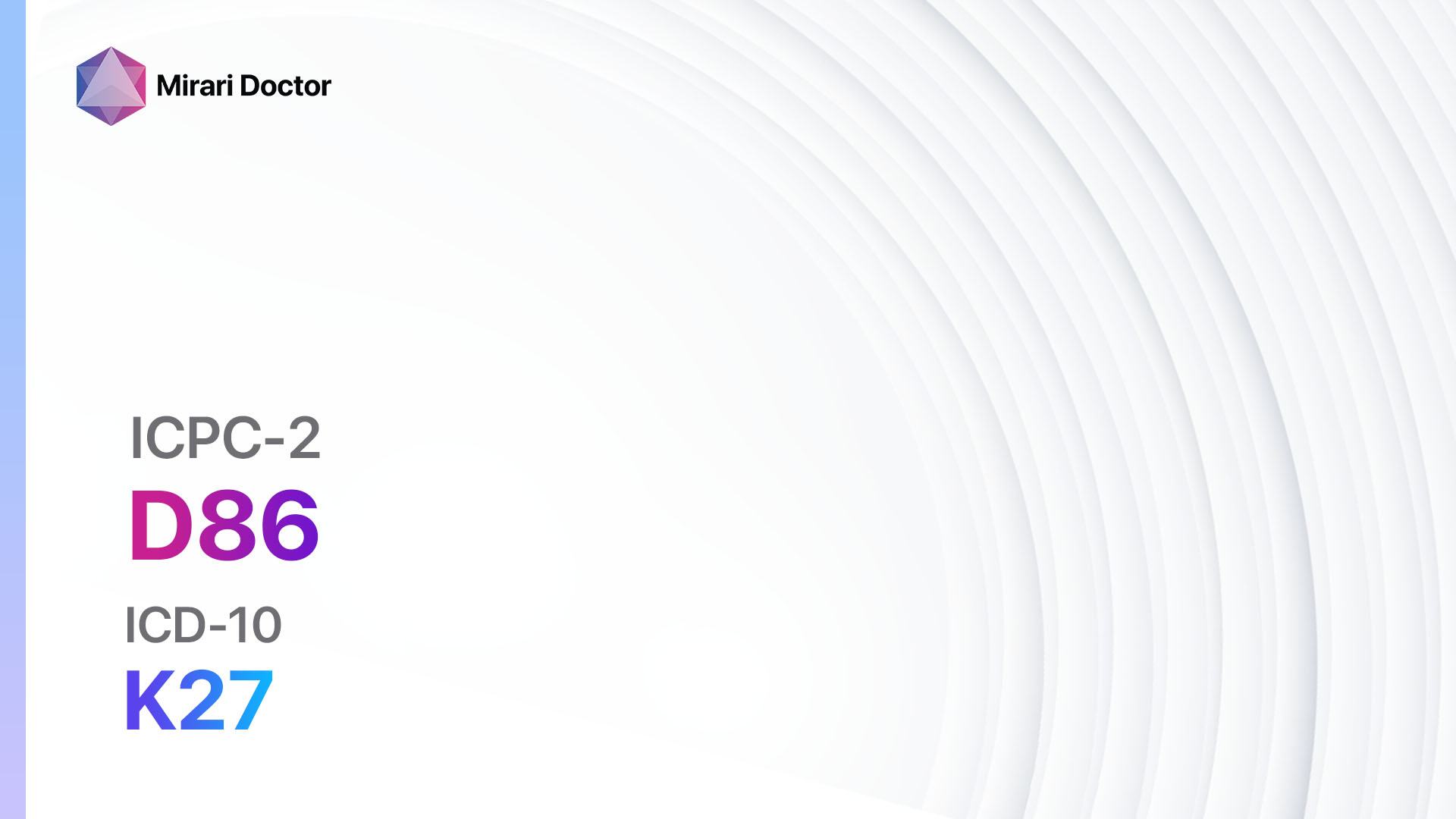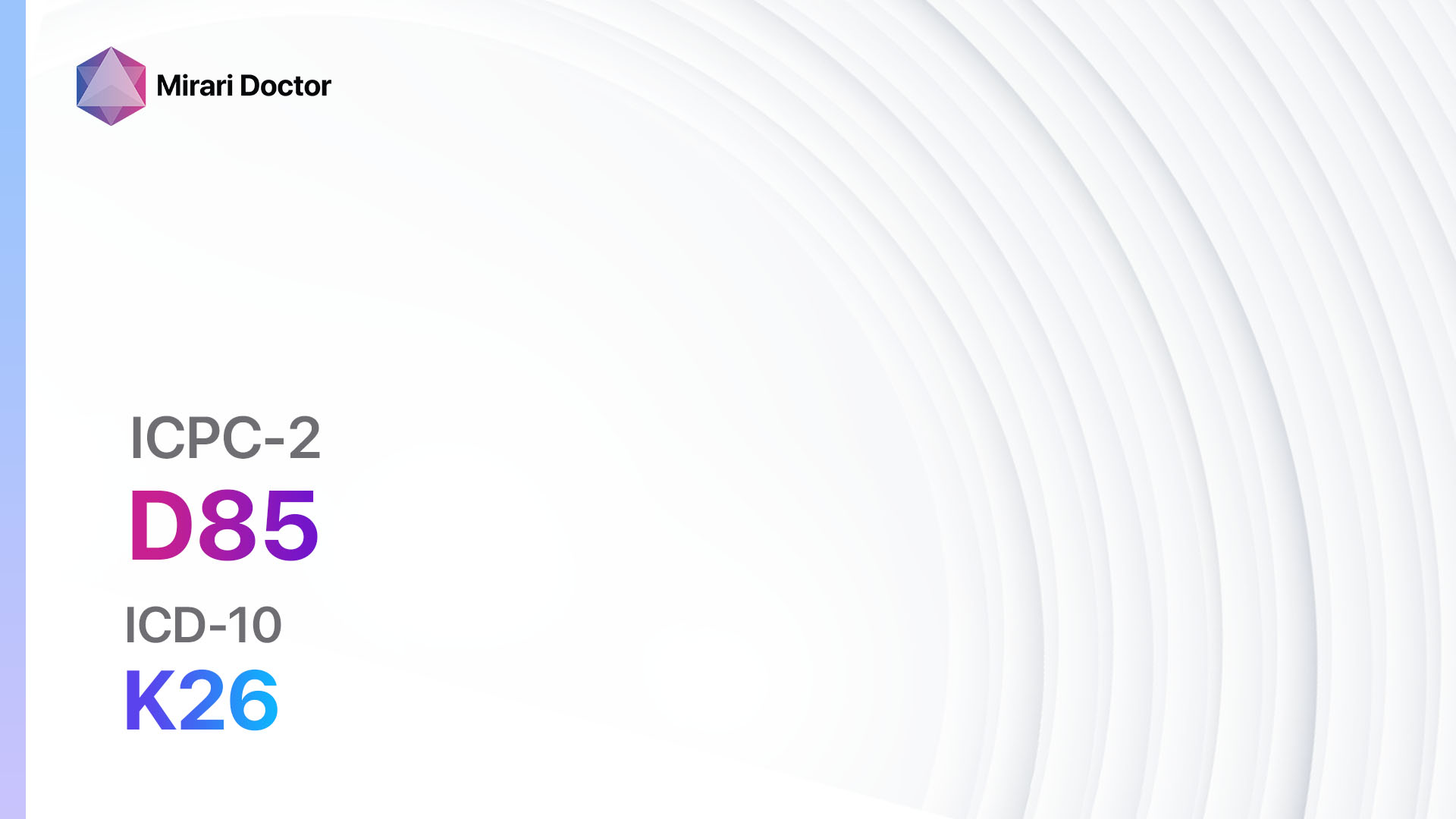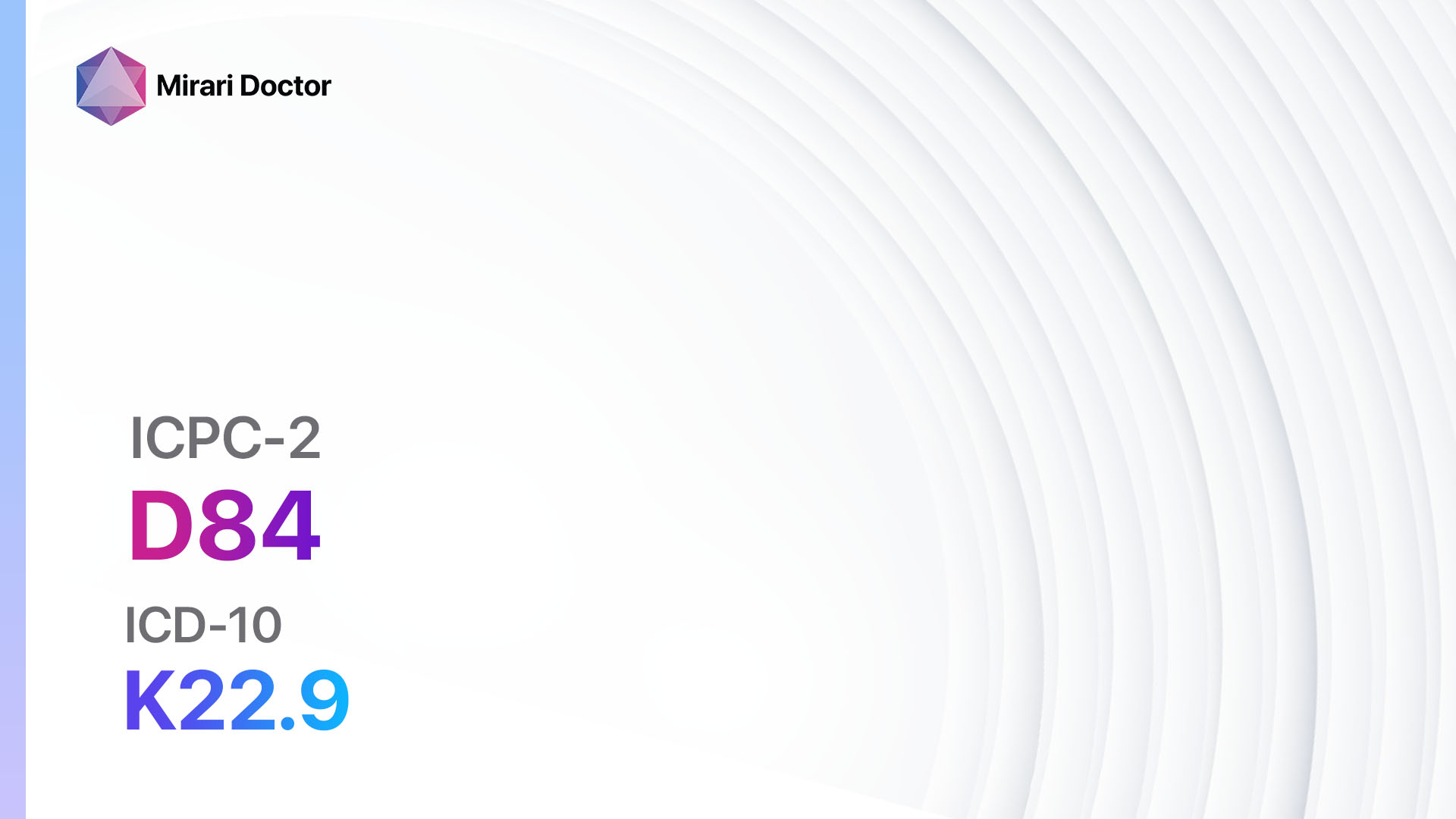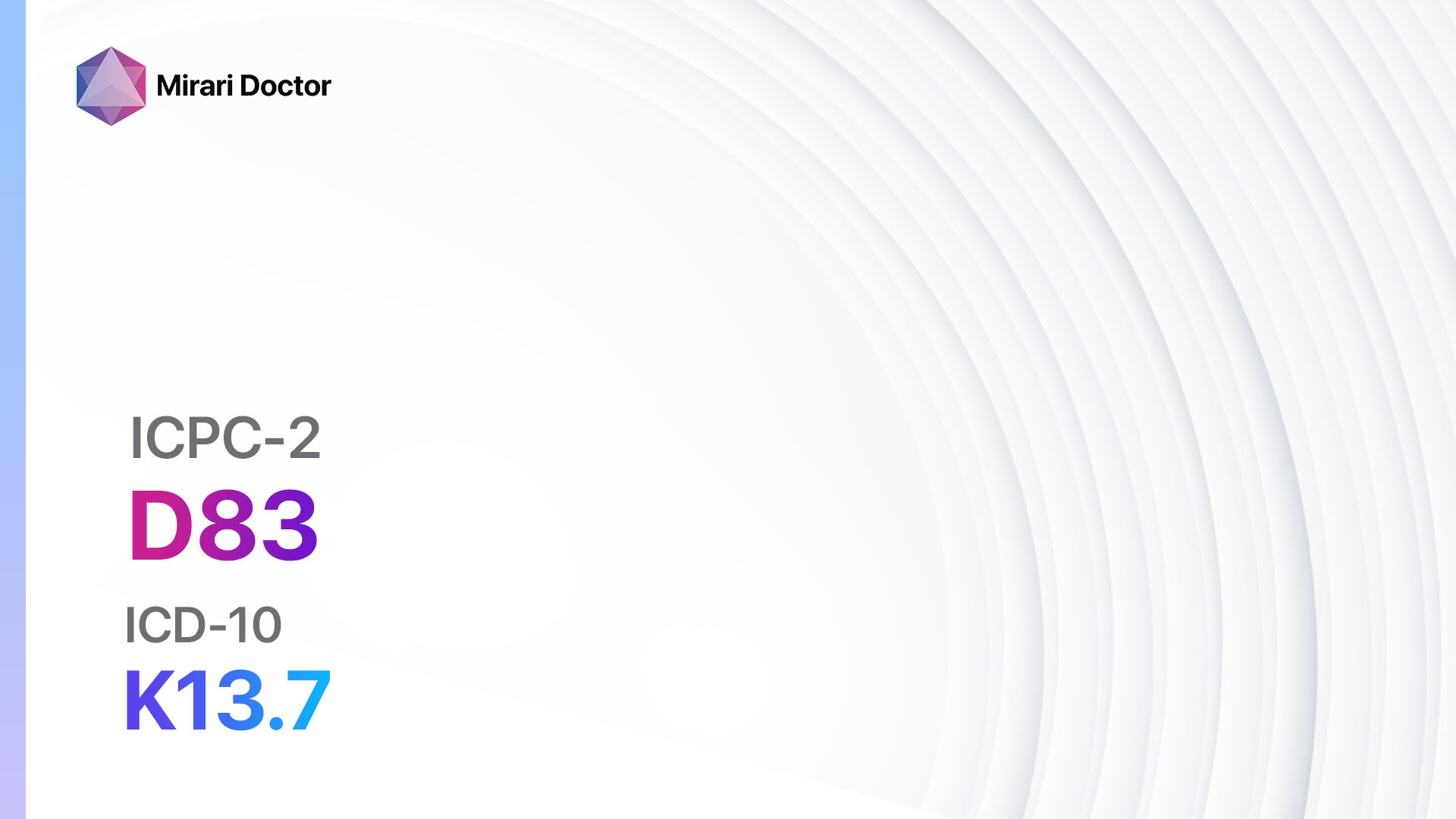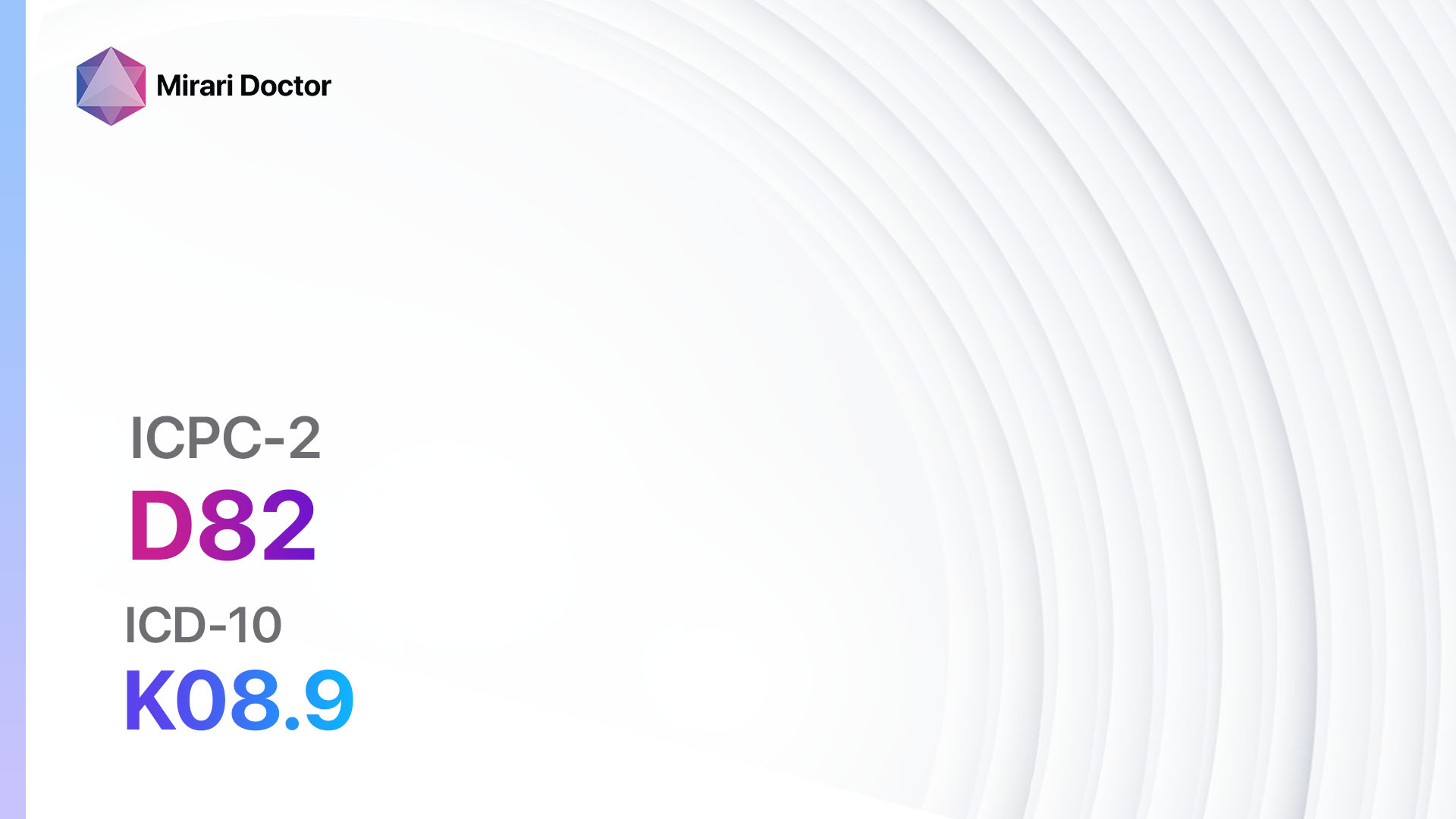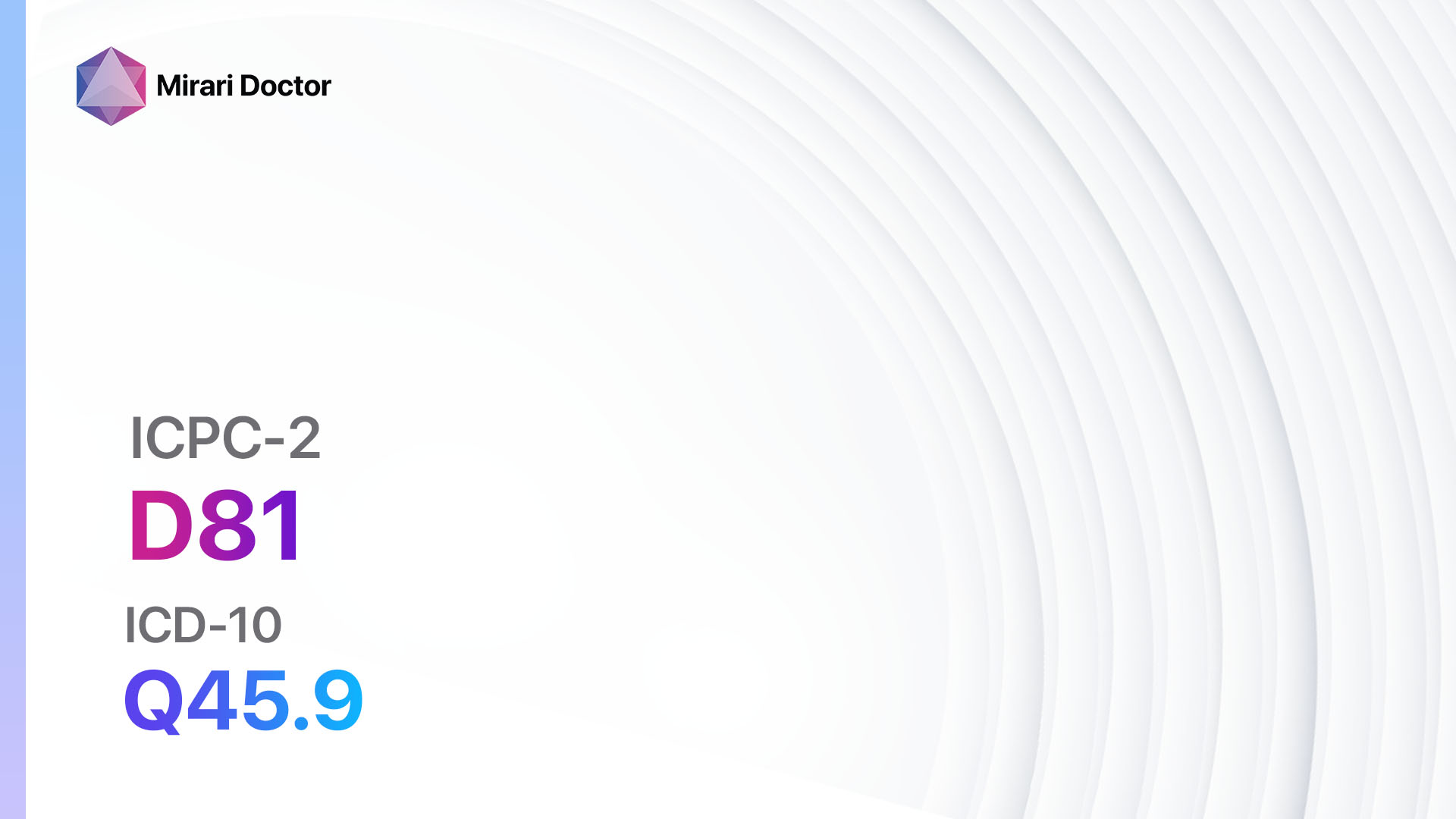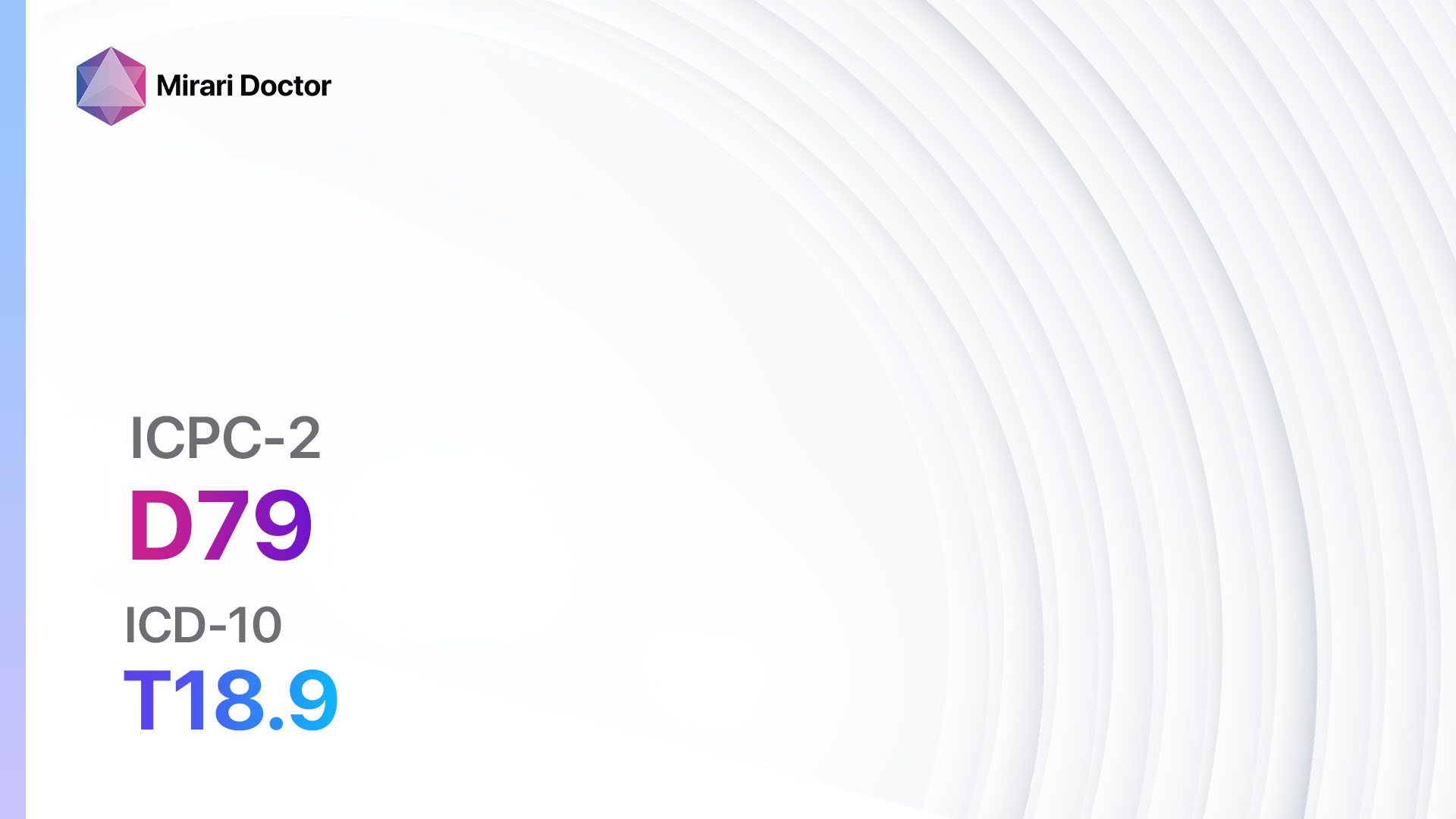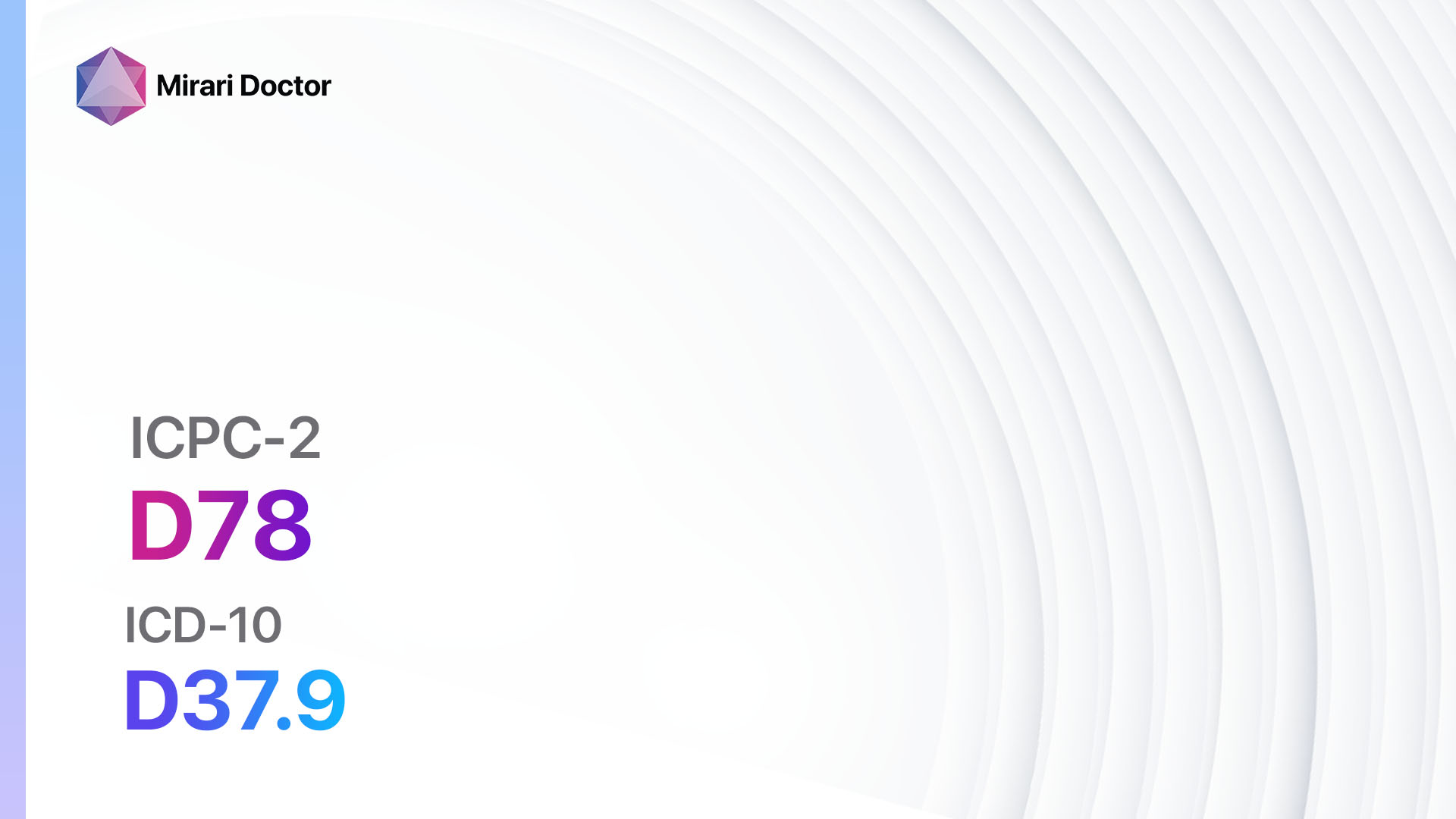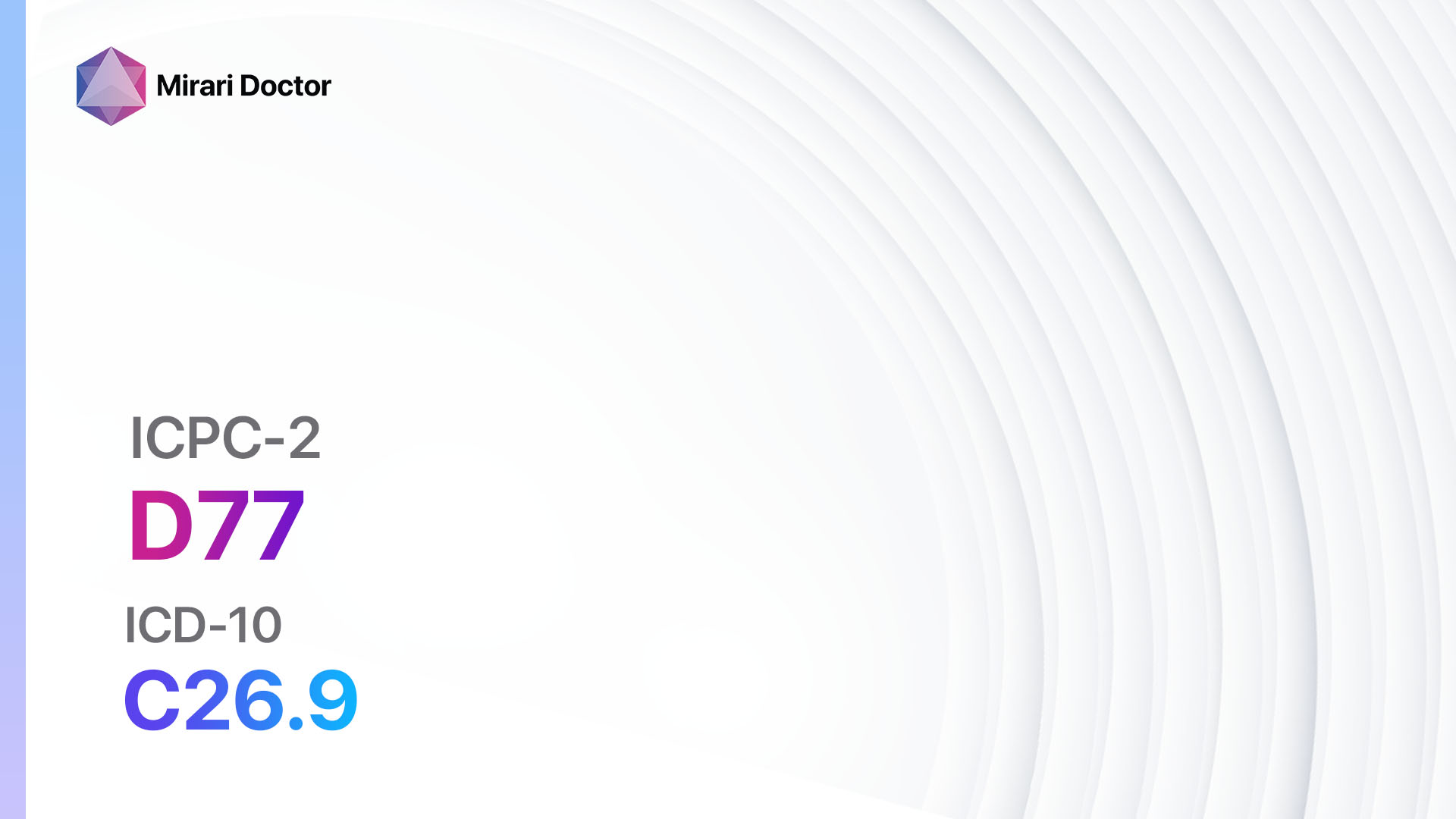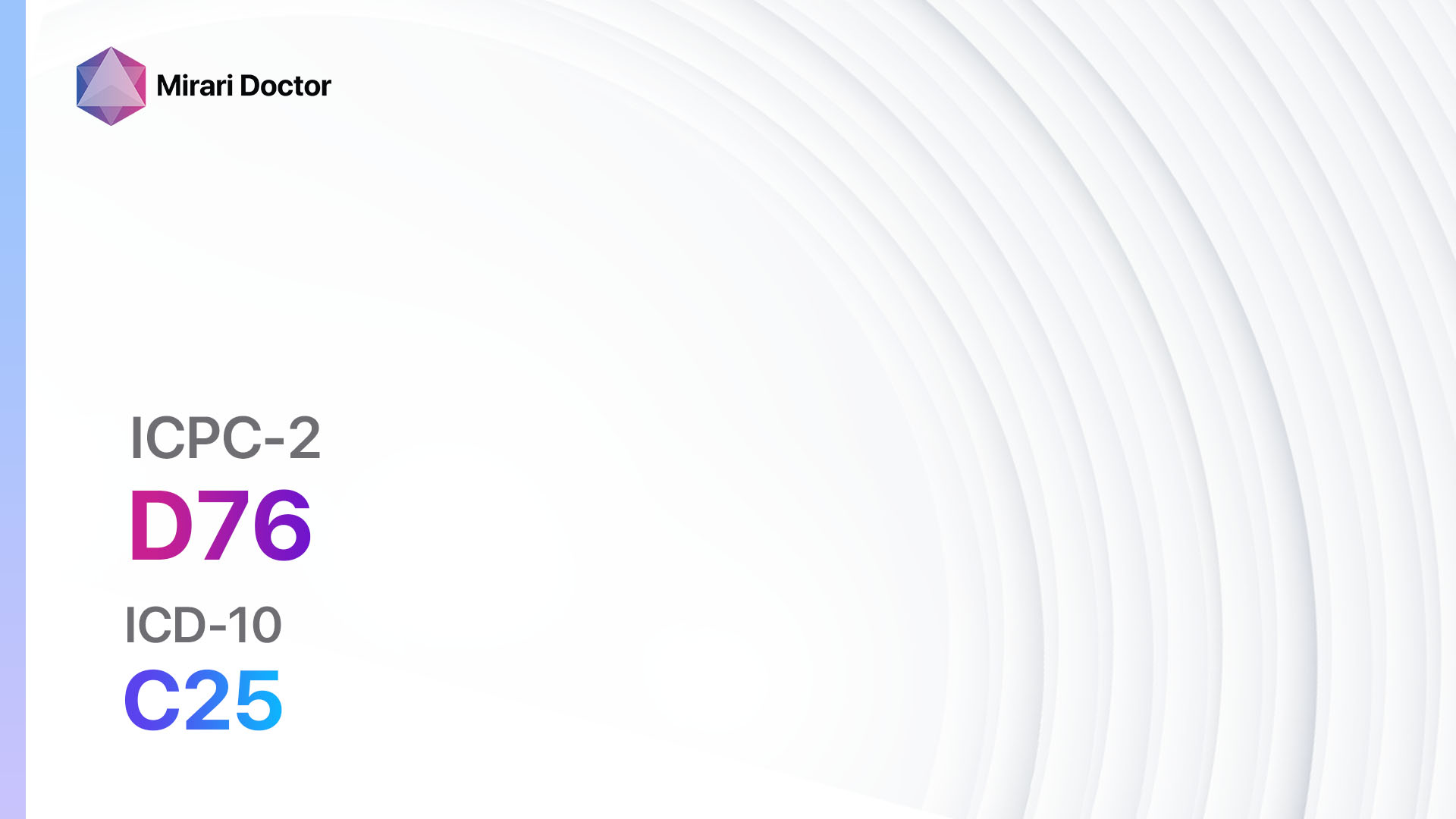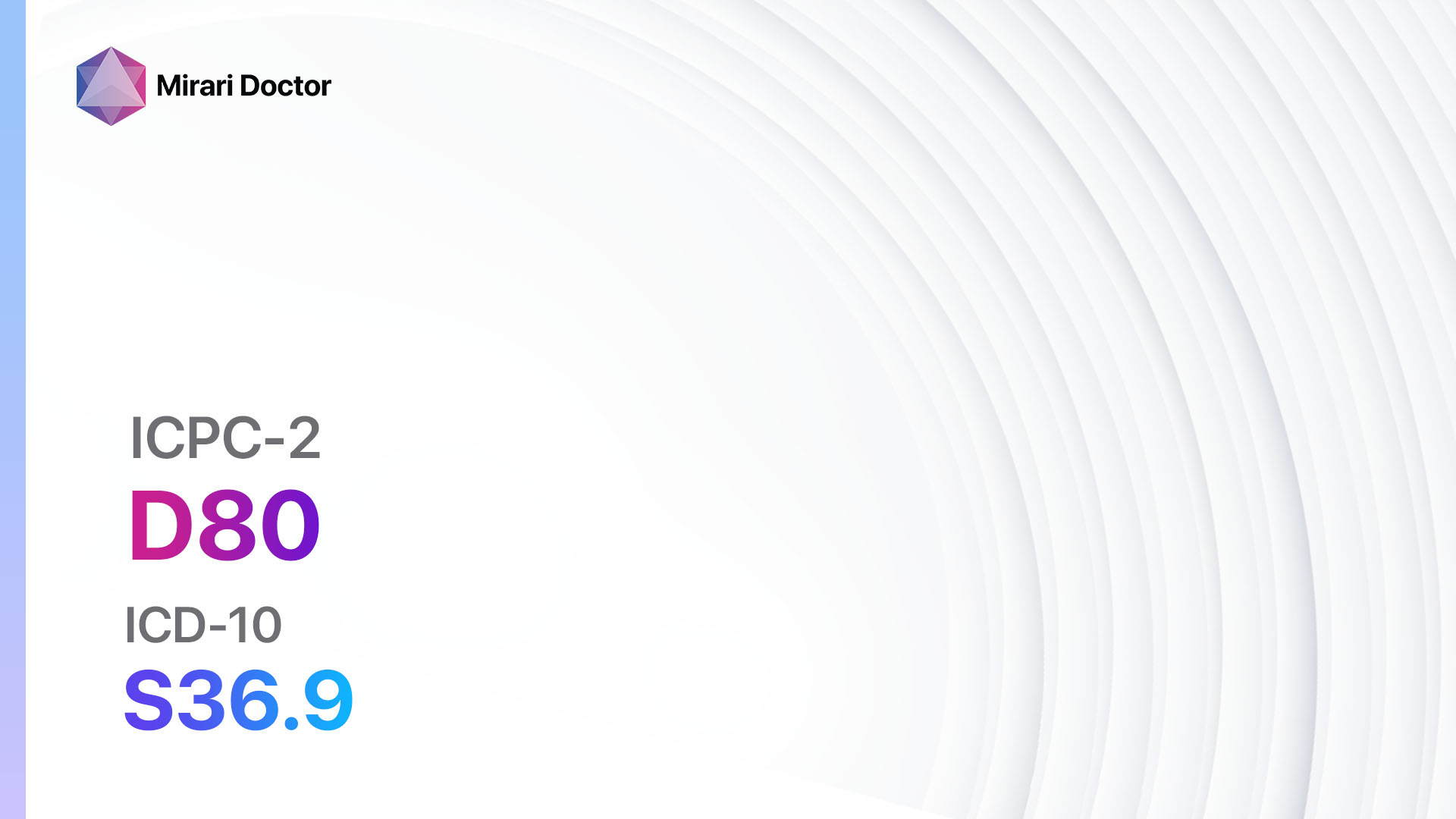
Introduction
Injury to the digestive system can occur due to various causes, such as trauma, accidents, or surgical procedures[1]. This guide aims to provide an overview of the symptoms, causes, diagnostic steps, possible interventions, and lifestyle interventions for injury to the digestive system.
Codes
- ICPC-2 Code: D80 Injury digestive system other[2]
- ICD-10 Code: S36.9 Injury of unspecified intra-abdominal organ[3]
Symptoms
- Abdominal pain: Sharp or dull pain in the abdomen[4].
- Nausea and vomiting: Feeling of queasiness and vomiting[5].
- Abdominal distension: Swelling or bloating of the abdomen[6].
- Changes in bowel movements: Diarrhea or constipation[7].
- Blood in stool: Presence of blood in the stool[8].
- Difficulty swallowing: Sensation of food getting stuck in the throat[9].
- Weight loss: Unintentional loss of weight[10].
Causes
- Trauma: Blunt force or penetrating injuries to the abdomen.
- Surgical procedures: Complications during or after surgery.
- Accidents: Falls or impact injuries to the abdomen.
- Inflammatory conditions: Conditions such as Crohn’s disease or ulcerative colitis.
- Infections: Bacterial, viral, or parasitic infections affecting the digestive system.
Diagnostic Steps
Medical History
- Gather information about the patient’s medical history, including any previous abdominal surgeries, digestive system disorders, or recent accidents or trauma.
- Ask about the onset and duration of symptoms, severity of pain, changes in bowel movements, and presence of blood in stool.
- Inquire about any associated symptoms, such as fever, weight loss, or difficulty swallowing.
Physical Examination
- Perform a thorough physical examination of the abdomen, looking for signs of tenderness, distension, or abnormal masses.
- Palpate the abdomen to check for any areas of localized pain or swelling.
- Auscultate the abdomen to assess bowel sounds and detect any abnormal sounds.
Laboratory Tests
- Complete blood count (CBC): To check for signs of infection or anemia.
- Liver function tests: To assess liver function and detect any abnormalities.
- Amylase and lipase levels: To evaluate pancreatic function.
- Stool analysis: To check for the presence of blood, parasites, or infections.
- C-reactive protein (CRP) and erythrocyte sedimentation rate (ESR): To assess inflammation levels.
Diagnostic Imaging
- X-ray: To visualize the abdomen and detect any abnormalities, such as fractures or foreign objects.
- Ultrasound: To assess the organs in the abdomen, such as the liver, gallbladder, or kidneys.
- CT scan: To obtain detailed images of the abdomen and identify any injuries or abnormalities.
- MRI: To provide detailed images of the digestive system and surrounding structures.
Other Tests
- Endoscopy: A flexible tube with a camera is inserted through the mouth or rectum to visualize the digestive system and obtain biopsies if necessary.
- Colonoscopy: Similar to endoscopy, but specifically examines the colon and rectum.
- Barium swallow or enema: Involves drinking a contrast material to visualize the digestive system during X-rays.
Follow-up and Patient Education
- Schedule follow-up appointments to monitor the progress of the injury and adjust treatment if necessary.
- Provide education to the patient about the importance of following the prescribed treatment plan, managing symptoms, and seeking medical attention if symptoms worsen or new symptoms develop.
Possible Interventions
Traditional Interventions
Medications:
Top 5 drugs for Injury to the Digestive System:
- Antacids (e.g., Tums, Maalox):
- Cost: $3-$10 for a bottle of 60 tablets.
- Contraindications: Allergy to antacids.
- Side effects: Constipation or diarrhea.
- Severe side effects: Rare, but may include kidney problems.
- Drug interactions: Some antacids may interact with other medications, such as antibiotics or anticoagulants.
- Warning: Do not exceed recommended dosage.
- Proton pump inhibitors (e.g., Omeprazole, Esomeprazole):
- Cost: $10-$20 for a month’s supply.
- Contraindications: Allergy to proton pump inhibitors.
- Side effects: Headache, diarrhea, or stomach pain.
- Severe side effects: Rare, but may include kidney problems or fractures.
- Drug interactions: Some proton pump inhibitors may interact with other medications, such as blood thinners or antifungal drugs.
- Warning: Long-term use may increase the risk of certain infections or nutrient deficiencies.
- Antibiotics (e.g., Amoxicillin, Ciprofloxacin):
- Cost: $10-$50 for a course of treatment.
- Contraindications: Allergy to antibiotics.
- Side effects: Nausea, diarrhea, or allergic reactions.
- Severe side effects: Rare, but may include severe allergic reactions or antibiotic-associated colitis.
- Drug interactions: Some antibiotics may interact with other medications, such as blood thinners or oral contraceptives.
- Warning: Take the full course of antibiotics as prescribed.
- Anti-inflammatory drugs (e.g., Ibuprofen, Naproxen):
- Cost: $5-$15 for a bottle of 100 tablets.
- Contraindications: Allergy to anti-inflammatory drugs, history of stomach ulcers or bleeding disorders.
- Side effects: Upset stomach, heartburn, or increased risk of bleeding.
- Severe side effects: Rare, but may include stomach ulcers or kidney problems.
- Drug interactions: Some anti-inflammatory drugs may interact with other medications, such as blood thinners or certain antidepressants.
- Warning: Take with food to reduce the risk of stomach upset.
- Anti-nausea drugs (e.g., Ondansetron, Metoclopramide):
- Cost: $10-$30 for a month’s supply.
- Contraindications: Allergy to anti-nausea drugs, history of certain heart conditions.
- Side effects: Headache, dizziness, or constipation.
- Severe side effects: Rare, but may include abnormal heart rhythms or muscle spasms.
- Drug interactions: Some anti-nausea drugs may interact with other medications, such as certain antidepressants or antipsychotics.
- Warning: Do not exceed recommended dosage.
Alternative Drugs:
- Digestive enzymes (e.g., Pancrelipase): Helps improve digestion and nutrient absorption. Cost: $50-$100 for a month’s supply.
- Probiotics: May help restore the balance of gut bacteria. Cost: $20-$50 for a month’s supply.
- Pain relievers (e.g., Acetaminophen): For mild to moderate pain relief. Cost: $5-$10 for a bottle of 100 tablets.
- Anti-diarrheal drugs (e.g., Loperamide): Helps control diarrhea. Cost: $5-$10 for a box of 24 capsules.
- Anti-spasmodic drugs (e.g., Dicyclomine): Relieves abdominal cramps. Cost: $10-$20 for a month’s supply.
Surgical Procedures:
- Exploratory laparotomy: Surgical exploration of the abdomen to identify and repair any injuries. Cost: $20,000-$50,000.
- Bowel resection: Removal of a portion of the intestine affected by injury or disease. Cost: $30,000-$60,000.
- Colostomy or ileostomy: Creation of an opening in the abdomen to divert the flow of stool. Cost: $10,000-$30,000.
Alternative Interventions
- Acupuncture: May help reduce pain and promote healing. Cost: $60-$120 per session.
- Herbal supplements: Some herbs, such as ginger or peppermint, may help alleviate digestive symptoms. Cost: Varies depending on the specific supplement.
- Mind-body techniques: Practices like meditation or yoga may help reduce stress and improve digestion. Cost: Varies depending on the specific program or class.
- Massage therapy: Can help relax the muscles and improve circulation in the abdomen. Cost: $60-$100 per session.
- Chiropractic care: May help improve spinal alignment and nerve function, which can impact digestion. Cost: $50-$100 per session.
Lifestyle Interventions
- Dietary modifications: Avoiding trigger foods, such as spicy or fatty foods, and incorporating more fiber-rich foods. Cost: Varies depending on food choices.
- Regular exercise: Helps improve digestion and overall health. Cost: Varies depending on the chosen activity (e.g., gym membership, equipment).
- Stress management: Techniques like deep breathing, meditation, or yoga can help reduce stress and improve digestion. Cost: Varies depending on the chosen method (e.g., classes, apps).
- Smoking cessation: Quitting smoking can improve digestive health. Cost: Varies depending on the chosen method (e.g., nicotine replacement therapy, counseling).
- Weight management: Maintaining a healthy weight can reduce the risk of digestive problems. Cost: Varies depending on the chosen weight loss program or method.
It is important to note that the cost ranges provided are approximate and may vary depending on the location and availability of the interventions. It is recommended to consult with a healthcare professional for personalized treatment options and cost estimates.
Mirari Cold Plasma Alternative Intervention
Understanding Mirari Cold Plasma
- Safe and Non-Invasive Treatment: Mirari Cold Plasma is a safe and non-invasive treatment option for various skin conditions. It does not require incisions, minimizing the risk of scarring, bleeding, or tissue damage.
- Efficient Extraction of Foreign Bodies: Mirari Cold Plasma facilitates the removal of foreign bodies from the skin by degrading and dissociating organic matter, allowing easier access and extraction.
- Pain Reduction and Comfort: Mirari Cold Plasma has a local analgesic effect, providing pain relief during the treatment, making it more comfortable for the patient.
- Reduced Risk of Infection: Mirari Cold Plasma has antimicrobial properties, effectively killing bacteria and reducing the risk of infection.
- Accelerated Healing and Minimal Scarring: Mirari Cold Plasma stimulates wound healing and tissue regeneration, reducing healing time and minimizing the formation of scars.
Mirari Cold Plasma Prescription
Video instructions for using Mirari Cold Plasma Device – D80 Injury digestive system other (ICD-10:S36.9)
| Mild | Moderate | Severe |
| Mode setting: 1 (Infection) Location: 3 (Kidney, Liver & Spleen) Morning: 15 minutes, Evening: 15 minutes |
Mode setting: 1 (Infection) Location: 3 (Kidney, Liver & Spleen) Morning: 30 minutes, Lunch: 30 minutes, Evening: 30 minutes |
Mode setting: 1 (Infection) Location: 3 (Kidney, Liver & Spleen) Morning: 30 minutes, Lunch: 30 minutes, Evening: 30 minutes |
| Mode setting: 2 (Wound Healing) Location: 3 (Kidney, Liver & Spleen) Morning: 15 minutes, Evening: 15 minutes |
Mode setting: 2 (Wound Healing) Location: 3 (Kidney, Liver & Spleen) Morning: 30 minutes, Lunch: 30 minutes, Evening: 30 minutes |
Mode setting: 2 (Wound Healing) Location: 3 (Kidney, Liver & Spleen) Morning: 30 minutes, Lunch: 30 minutes, Evening: 30 minutes |
| Mode setting: 3 (Antiviral Therapy) Location: 3 (Kidney, Liver & Spleen) Morning: 15 minutes, Evening: 15 minutes |
Mode setting: 3 (Antiviral Therapy) Location: 3 (Kidney, Liver & Spleen) Morning: 30 minutes, Lunch: 30 minutes, Evening: 30 minutes |
Mode setting: 3 (Antiviral Therapy) Location: 3 (Kidney, Liver & Spleen) Morning: 30 minutes, Lunch: 30 minutes, Evening: 30 minutes |
| Mode setting: 7 (Immunotherapy) Location: 4 (Heart, Bile & Pancreas) Morning: 15 minutes, Evening: 15 minutes |
Mode setting: 7 (Immunotherapy) Location: 4 (Heart, Bile & Pancreas) Morning: 30 minutes, Lunch: 30 minutes, Evening: 30 minutes |
Mode setting: 7 (Immunotherapy) Location: 4 (Heart, Bile & Pancreas) Morning: 30 minutes, Lunch: 30 minutes, Evening: 30 minutes |
| Total Morning: 60 minutes approx. $10 USD, Evening: 60 minutes approx. $10 USD |
Total Morning: 120 minutes approx. $20 USD, Lunch: 120 minutes approx. $20 USD, Evening: 120 minutes approx. $20 USD, |
Total Morning: 120 minutes approx. $20 USD, Lunch: 120 minutes approx. $20 USD, Evening: 120 minutes approx. $20 USD, |
| Usual treatment for 7-60 days approx. $140 USD – $1200 USD | Usual treatment for 6-8 weeks approx. $2,520 USD – $3,360 USD |
Usual treatment for 3-6 months approx. $5,400 USD – $10,800 USD
|
 |
|
Use the Mirari Cold Plasma device to treat Injury digestive system other effectively.
WARNING: MIRARI COLD PLASMA IS DESIGNED FOR THE HUMAN BODY WITHOUT ANY ARTIFICIAL OR THIRD PARTY PRODUCTS. USE OF OTHER PRODUCTS IN COMBINATION WITH MIRARI COLD PLASMA MAY CAUSE UNPREDICTABLE EFFECTS, HARM OR INJURY. PLEASE CONSULT A MEDICAL PROFESSIONAL BEFORE COMBINING ANY OTHER PRODUCTS WITH USE OF MIRARI.
Step 1: Cleanse the Skin
- Start by cleaning the affected area of the skin with a gentle cleanser or mild soap and water. Gently pat the area dry with a clean towel.
Step 2: Prepare the Mirari Cold Plasma device
- Ensure that the Mirari Cold Plasma device is fully charged or has fresh batteries as per the manufacturer’s instructions. Make sure the device is clean and in good working condition.
- Switch on the Mirari device using the power button or by following the specific instructions provided with the device.
- Some Mirari devices may have adjustable settings for intensity or treatment duration. Follow the manufacturer’s instructions to select the appropriate settings based on your needs and the recommended guidelines.
Step 3: Apply the Device
- Place the Mirari device in direct contact with the affected area of the skin. Gently glide or hold the device over the skin surface, ensuring even coverage of the area experiencing.
- Slowly move the Mirari device in a circular motion or follow a specific pattern as indicated in the user manual. This helps ensure thorough treatment coverage.
Step 4: Monitor and Assess:
- Keep track of your progress and evaluate the effectiveness of the Mirari device in managing your Injury digestive system other. If you have any concerns or notice any adverse reactions, consult with your health care professional.
Note
This guide is for informational purposes only and should not replace the advice of a medical professional. Always consult with your healthcare provider or a qualified medical professional for personal advice, diagnosis, or treatment. Do not solely rely on the information presented here for decisions about your health. Use of this information is at your own risk. The authors of this guide, nor any associated entities or platforms, are not responsible for any potential adverse effects or outcomes based on the content.
Mirari Cold Plasma System Disclaimer
- Purpose: The Mirari Cold Plasma System is a Class 2 medical device designed for use by trained healthcare professionals. It is registered for use in Thailand and Vietnam. It is not intended for use outside of these locations.
- Informational Use: The content and information provided with the device are for educational and informational purposes only. They are not a substitute for professional medical advice or care.
- Variable Outcomes: While the device is approved for specific uses, individual outcomes can differ. We do not assert or guarantee specific medical outcomes.
- Consultation: Prior to utilizing the device or making decisions based on its content, it is essential to consult with a Certified Mirari Tele-Therapist and your medical healthcare provider regarding specific protocols.
- Liability: By using this device, users are acknowledging and accepting all potential risks. Neither the manufacturer nor the distributor will be held accountable for any adverse reactions, injuries, or damages stemming from its use.
- Geographical Availability: This device has received approval for designated purposes by the Thai and Vietnam FDA. As of now, outside of Thailand and Vietnam, the Mirari Cold Plasma System is not available for purchase or use.
References
- Thegastrosurgeon.com. (n.d.). 100% Best Trauma to the intestine Treatment in Chennai. Retrieved from https://thegastrosurgeon.com/trauma-to-the-intestine/
- PH3C. (n.d.). ICPC-2 Codes. Retrieved from http://www.ph3c.org/PH3C/docs/27/000460/0000852.pdf
- ICD10data.com. (2024). 2024 ICD-10-CM Diagnosis Code S36.9. Retrieved from https://www.icd10data.com/ICD10CM/Codes/S00-T88/S30-S39/S36-/S36.9
- Vinmec.com. (n.d.). Symptoms of blunt abdominal trauma. Retrieved from https://www.vinmec.com/en/news/health-news/general-health-check/symptoms-of-blunt-abdominal-trauma/
- Cincinnatichildrens.org. (n.d.). Intestinal Injuries | Diagnosis, Treatment & Prevention. Retrieved from https://www.cincinnatichildrens.org/health/i/intestinal-injury
- Nilsson, Anne C ; Östman, Elin M ; Holst, Jens J ; Björck, Inger M.E (2008). Including Indigestible Carbohydrates in the Evening Meal of Healthy Subjects Improves Glucose Tolerance, Lowers Inflammatory Markers, and Increases Satiety after a Subsequent Standardized Breakfast. DOI: 10.1093/jn/138.4.732
- Saura-Calixto, Fulgencio ; García-Alonso, Alejandra ; Goñi, Isabel ; Bravo, Laura (2000). In Vitro Determination of the Indigestible Fraction in Foods: An Alternative to Dietary Fiber Analysis. DOI: 10.1021/jf0000373
- Espinosa-Martos, Irene ; Rupérez, Pilar (2009). Indigestible fraction of okara from soybean: composition, physicochemical properties and in vitro fermentability by pure cultures of Lactobacillus acidophilus and Bifidobacterium bifidum. DOI: 10.1007/s00217-008-0979-7
- Garber, Ken (2011). Inducing Indigestion: Companies Embrace Autophagy Inhibitors. DOI: 10.1093/jnci/djr168
- Kwon, S ; Chung, K.M ; Shin, S.I ; Moon, T.W (2005). Contents of indigestible fraction, water solubility, and color of pyrodextrins made from waxy sorghum starch. DOI: 10.1094/CC-82-0101
Related articles
Made in USA


